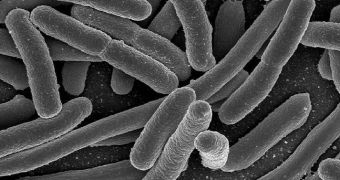First and foremost, the International Space Station (ISS) is a scientific research facility, and astronauts aboard are also professionals trained in handling a variety of experiments. Some of the studies they are conducting could help experts determine how infectious diseases spread in space.
As more and more results become available, scientists may be able to create new approaches to ensuring the long-term health of astronauts. As is usually the case with these things, the discoveries will translate into applications for the general population here on Earth as well.
The focus of research conducted on the ISS is currently the microorganism Pseudomonas aeruginosa, a bacterial pathogen that causes generalized inflammation and sepsis in the human body. It can live on practically any surface it chooses to.
During the Apollo 13 mission of 1970, NASA astronaut Fred Haise notoriously fell ill after being infected with this microorganism. P. aeruginosa is very dangerous because it can be fatal if it infects major organs such as the lungs.
“With our space-based research efforts, including the International Space Station, we are not only continuing our human presence in space, but we are engaged in science that can make a real difference in people's lives here on Earth,” NASA Administrator Charles Bolden explains.
“NASA's leadership in human spaceflight allows us to conduct innovative and ground-breaking science that reveals the unknown and unlocks the mysteries of how disease-causing agents work,” he adds.
In other words, space-based research is meant to determine the mechanisms that disease-causing agents employ when they spread to infect new hosts. Figuring this out could enable the creation of advanced therapies and new vaccines against a large number of infection types.
Microbial pathogens have been studied extensively on the ISS, but also on the space shuttles during their time in orbit. Details of the latest such study appear in a recent issue of the journal Applied and Environmental Microbiology.
“For the first time, we're able to see that two very different species of bacteria – Salmonella and Pseudomonas – share the same basic regulating mechanism, or master control switch, that micro-manages many of the microbes' responses to the spaceflight environment,” Cheryl Nickerson says.
“We have shown that spaceflight affects common regulators in both bacteria that invariably cause disease in healthy individuals [Salmonella] and those that cause disease only in people with compromised immune systems [Pseudomonas],” she adds.
The expert holds an appointment as an associate professor with the Center for Infectious Diseases and Vaccinology, at the Arizona State University (ASU) in Tempe Biodesign Institute (BI).
“We discovered that aspects of the environment that microbes encountered during spaceflight appeared to mimic key conditions that pathogens normally encounter in our bodies during the natural course of infection, particularly in the respiratory system, gastrointestinal system and urogenital tract,” Nickerson concludes.

 14 DAY TRIAL //
14 DAY TRIAL //